
Emma Goldman was a Russian-born anarchist, political activist, and writer. She played a pivotal role in the development of anarchist political philosophy in North America and Europe in the first half of the 20th century.
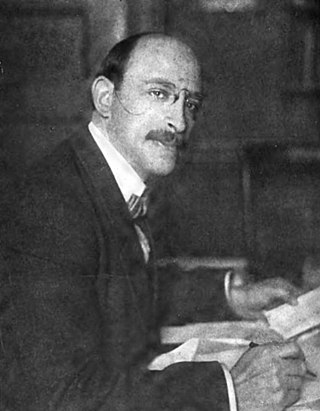
Alexander Berkman was a Russian-American anarchist and author. He was a leading member of the anarchist movement in the early 20th century, famous for both his political activism and his writing.
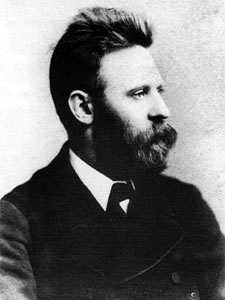
Johann Joseph "Hans" Most was a German-American Social Democratic and then anarchist politician, newspaper editor, and orator. He is credited with popularizing the concept of "propaganda of the deed". His grandson was Boston Celtics radio play-by-play man Johnny Most.
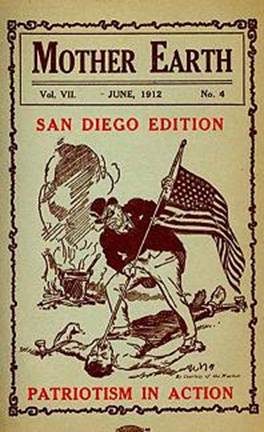
Mother Earth was an American anarchist journal that described itself as "A Monthly Magazine Devoted to Social Science and Literature". Founded in early 1906 and initially edited by Emma Goldman, an activist in the United States, it published articles by contemporary activists and writers in Europe as well as the US, in addition to essays by historic figures.
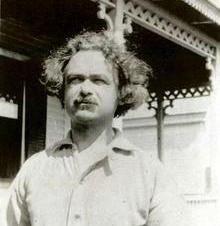
Hippolyte Havel (1871–1950) was an American anarchist who was known as an activist in the United States and part of the radical circle around Emma Goldman in the early 20th century. He had been imprisoned as a young man in Austria-Hungary because of his political activities, but made his way to London. Then in the British metropolis he met anarchist Emma Goldman on a lecture tour from the United States. She befriended him and he immigrated to the United States.
In the United States, anarchism began in the mid-19th century and started to grow in influence as it entered the American labor movements, growing an anarcho-communist current as well as gaining notoriety for violent propaganda of the deed and campaigning for diverse social reforms in the early 20th century. By around the start of the 20th century, the heyday of individualist anarchism had passed and anarcho-communism and other social anarchist currents emerged as the dominant anarchist tendency.

Anarchism and Other Essays (1910) is a collection of essays written by Emma Goldman, first published by Mother Earth Publishing Association. The essays outline Goldman's anarchist views on a number of subjects, most notably the oppression of women and perceived shortcomings of first wave feminism, but also prisons, political violence, sexuality, religion, nationalism and art theory. Hippolyte Havel contributed a short biography of Goldman to the anthology. The essays were adapted from lectures Goldman had given on fundraising tours for her journal Mother Earth.Anarchism and Other Essays was Goldman's first published book. "The Traffic in Women" has received particular attention from feminist scholars since the book's publication.
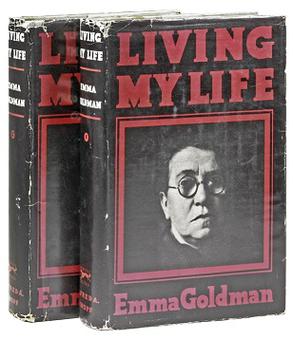
Living My Life is the autobiography of Lithuanian-born anarchist Emma Goldman, who became internationally renowned as an activist based in the United States. It was published in two volumes in 1931 and 1934. Goldman wrote it while living in Saint-Tropez, France, following her disillusionment with the Bolshevik role in the Russian revolution.

The Blast was a semi-monthly anarchist periodical published by Alexander Berkman in San Francisco, California, USA from 1916 through 1917. The publication had roots in Emma Goldman's magazine Mother Earth, having been launched when her former consort Berkman left his editorial position at that publication.

Freiheit was a long-running anarchist journal established by Johann Most in 1879. It was known for advocacy of attentat, or propaganda of the deed—revolutionary violence that could inspire people to revolution.

Now and After: The ABC of Communist Anarchism is an introduction to the principles of anarchism and anarchist communism written by Alexander Berkman. First published in 1929 by Vanguard Press, Now and After has been reprinted many times, often in partial or abbreviated versions, under the titles What Is Communist Anarchism?, What Is Anarchism? or The ABC of Anarchism.

The Bolshevik Myth is a book by Alexander Berkman describing his experiences in Bolshevist Russia from 1920 to 1922, when he saw the aftermath of the Russian Revolution of 1917. Written in the form of a diary, The Bolshevik Myth describes how Berkman's initial enthusiasm for the revolution faded as he became disillusioned with the Bolsheviks and their suppression of all political dissent.

Louise Berger was a Russian Latvian anarchist, a member of the Anarchist Red Cross, and editor of Emma Goldman's Mother Earth Bulletin in New York. Berger became well known outside anarchist circles in 1914 after a premature bomb explosion at her New York City apartment, which killed four persons and destroyed part of the building.

Harry May Kelly (1871–1953) was an American anarchist and lifelong activist in the Modern School movement.
Major anarchist thinkers, past and present, have generally supported women's equality. Free love advocates sometimes traced their roots back to Josiah Warren and to experimental communities, viewing sexual freedom as an expression of an individual's self-ownership. Free love particularly stressed women's rights. In New York's Greenwich Village, "bohemian" feminists and socialists advocated self-realisation and pleasure for both men and women. In Europe and North America, the free love movement combined ideas revived from utopian socialism with anarchism and feminism to attack the "hypocritical" sexual morality of the Victorian era.

Queer anarchism, or anarcha-queer, is an anarchist school of thought that advocates anarchism and social revolution as a means of queer liberation and abolition of hierarchies such as homophobia, lesbophobia, transmisogyny, biphobia, transphobia, aphobia, heteronormativity, patriarchy, and the gender binary. People who campaigned for LGBT rights both outside and inside the anarchist and LGBT movements include John Henry Mackay, Lucía Sánchez Saornil, Adolf Brand and Daniel Guérin. Individualist anarchist Adolf Brand published Der Eigene from 1896 to 1932 in Berlin, the first sustained journal dedicated to gay issues.

Modest Stein (1871–1958), born Modest Aronstam, was a Lithuanian Jewish and American illustrator and close associate of the anarchists Alexander Berkman and Emma Goldman. He was Berkman's cousin and intended replacement in the attempted assassination of Henry Clay Frick, an industrialist and union buster, in 1892. Later Stein abandoned active anarchism and became a successful newspaper, pulp magazine, and book illustrator, while continuing to support Berkman and Goldman financially.

Sasha and Emma: The Anarchist Odyssey of Alexander Berkman and Emma Goldman is a 2012 history book about Alexander Berkman and Emma Goldman. The book was co-authored by the father-daughter pair Paul and Karen Avrich, and posthumously published after Paul's death. It was a New York Times Book Review Editors' Choice for 2012.

Helene Minkin was a Russian-Jewish anarchist immigrant who settled in New York City and had close ties with three of the U.S. anarchist movement's most notable figures – Emma Goldman, Alexander Berkman, and Johann Most – Minkin's common-law husband.
Roman Lewis (1864–1918) was a prominent Jewish anarchist in New York. Fluent in Russian and Yiddish, he was the first editor of the Yiddish-language anarchist newspaper Fraye Arbeter Shtime. For a time, Lewis was the Pioneers of Liberty's best speaker. Lewis attended gymnasium in Russia. In New York, when he wasn't working at making shirts, he spent his leisure time with the anarchist movement and spoke at Jewish union rallies. He later became a Social-Democrat, attended law school in Chicago, where he remained. He was elected an assistant district attorney in Chicago as a Democrat. Lewis committed suicide in Cincinnati in 1918.


















